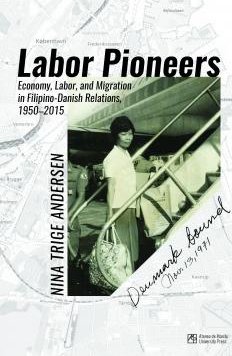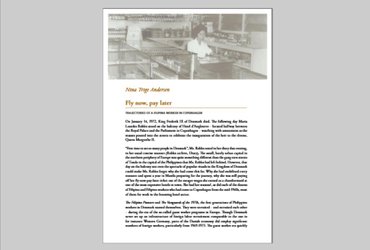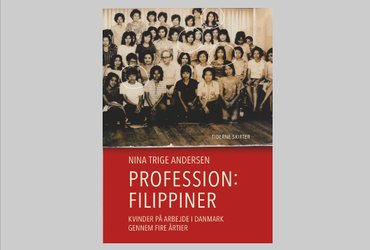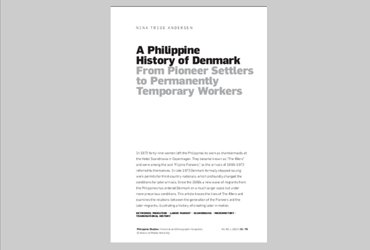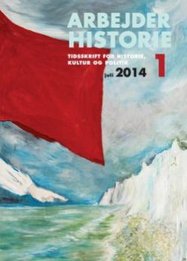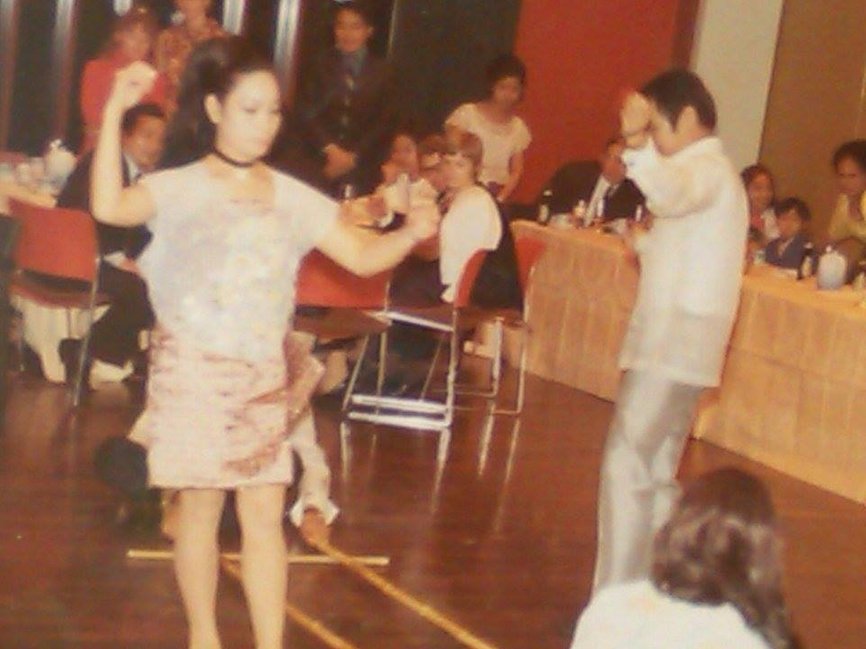A PHILIPPINE
HISTORY
of Denmark
Order the e-book from the publisher or a printed copy from the author: nina.trige.andersen@gmail.com
Fly now, pay later
Trajectories of a Filipina worker in Copenhagen. A story based on the archive of the Robles family
THE HISTORY OF MIGRATION
“The old photos of Copenhagen, they’re part of my history, but not quite. It wasn’t my ancestors who built the fountains and laid the railway tracks. The old photos of people marching against Marcos, they’re part of my history too, but not quite. I wasn’t born yet, and my parents were here in Denmark. But the other day I was flipping through the 1980 newsletter from the Filipino Association in Denmark, with lots of photos from Saint Anne Church at Amager, from the parties, and the workplaces. And that is my history. This is what I grew up with, this is the life my parents built. My generation is a part of the history of Denmark and of the Philippines, but not quite—our history is the history of migration."
Wesley Valdez, son of 'Filipino Pioneers' in Denmark, in an interview in 2012
Profession: Filippiner
Kvinder på arbejde i Danmark gennem fire årtier. Bogen vandt Rudolf Meidner-pris 2017
A Philippine History of Denmark
From Pioneer Settlers to Permanently Temporary Workers. An article for the journal Philippine Studies
On the trade union histories of Filipinas working at hotels in Copenhagen, read for instance the chapter "‘Sheraton, d’Angleterre, Scandinavia – they were all connected by workers’: Filipina Chambermaids organising within and outside the trade union in Denmark 1960s to 1990s" in the book Migrant Actors Worldwide from Brill, 2024, or the article "Organizing against all Odds: Filipina chambermaids in Copenhagen, 1970s–1990s" in Women's History Review, 2020.
Available in Danish are for example these articles: "Filippinske hotelarbejdere i København 1960'erne-1990'erne" in Arbejderhistorie 2014/1, followed up by "Organisering af filippinske stuepiger på københavnske hoteller 1980'erne-2000'erne" in Arbejderhistorie 2018/2, and "HRF København og de filippinske stuepiger: Fra ‘uvilje mod udlændinge’ til pionerer i
migrantorganisering" in Arbetarhistoria 2018/167-168 - an article that was awarded the Kjersti Bosdotter-prize 2018.
On Philippines Studies' blog is a short piece on the connections between contemporary migrant conditions and the history of migration from Philippines to Denmark: Truck Drivers and Chambermaids - The Traces of History Connect
In this essay in Kvinder, Køn og Forskning, 2018, the 'guest worker' era is revisited in light of recruitment - and self-organizing - of Filipina chambermaids in Copenhagen; and in the essay 'Arbejde og kapital i bevægelse' from Eftertrykket, the Danish narratives about migrant workers are challenged based on the book 'Labor Pioneers'.
More articles in English, French and Danish can be found here.
Luz Hammer and Elmo Carino dancing the Tinikling during Filipino Association of Denmark's Christmas Party at Hotel Sheraton, Copenhagen, 1971. Photo contributed by Luz Hammer
Filipinas and Filipinos have been living and working in Denmark since the 1960s - some came as early as the 1950s. The Copenhagen hotels and Copenhagen airport, Toms Chocolate and Storno Electronics are some of the workplaces that hired labor from the Philippines since the so-called guest worker era in Europe.
Explore the archive Filippinernes Danmarkshistorie / A Philippine History of Denmark and the stories that emerged from it - and go look in your boxes and shelves for materials to contribute. Help transform individual and collective stories into history.
Make a donation
It takes time to collect, digitalize and organize an archive. Some of the work also requires special equipment. If you like the archive, you can help expand its scope by making a donation. Click to make a PayPal transfer for the archive administrator, historian and journalist Nina Trige Andersen. If you have specific ideas for what your donation should be spend on, send an email to nina.trige.andersen@gmail.com
